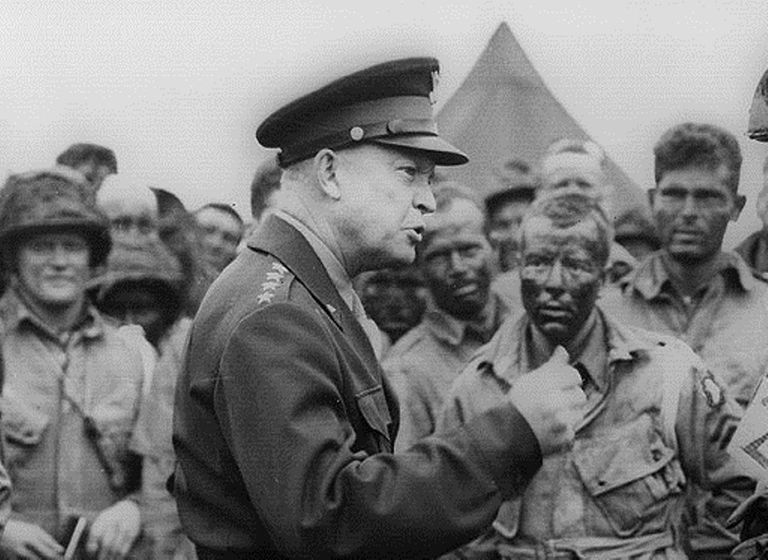
* A clearly articulated goal helps improve the chances of successfully completing the project within schedule, budget and scope.
* Document and communicate your mission through a Project Charter
Do all of your project team members really know the goal of your project? Many times, they’ll answer with the usual “to finish the project requirements on time and on budget.” Sure, the senior members might be the only ones who know the budget, and all might have some idea as to the target date (hopefully). However, if we ask any of your team members randomly about the real goals of the project — the client’s requirement, will they be able to respond with consistency among themselves? This sounds very simple to answer but it’s actually fairly common to hear inconsistent answers even from within the project team building the project.

Strategic Event: Moon Landing
In 1958, National Aeronautics and Space Administration (NASA) had a goal like this: “The expansion of human knowledge of phenomena in the atmosphere and space” That is the first of eight goals listed in a two-page document that NASA listed for their space program. Every goal was great. However, it was written with too many intentions broadly stated with no specific target date.
In 1961, John F. Kennedy stated: “I believe that this nation should commit itself to achieving the goal, before this decade is out, of landing a man on the moon and returning him safely to the earth.”. This statement gave the NASA people a clear quantifiable goal: It had a clear mission and a date – before the decade is out (’60s).
In July 20, 1969, Neil Armstrong, Michael Collins and Buzz Aldrin landed on the moon and they later returned to earth on July 24, 1969. Mission accomplished.
Having a clearly articulated goal helps the entire team maintain focus on what is important to achieve it. It defines how they’ll allocate their time to contribute to the mission.
Tactical Situation: Commander’s Intent
Colonel Tom Kolditz of West Point relates how the US military spends a lot of time planning every mission and they produced marvels of communication. The drawback he says is “The plans often turn out to be useless”. The plan becomes useless when their enemies do something unpredictable which is very often. What they did notice is it is more effective to come up with what they call “Commander’s Intent (CI)”. This is a crisp, plain-talk statement specifying the goal of each operation. It states the goal – what needs to be done. It does not state how it needs to be done. (Dan Heath, Made To Stick, 2006). The Commander’s Intent (CI) is similar to the project charter — it defines the mission.
The Project Charter defines the goal clearly
We can apply both examples above in our business projects — by the defining the project charter clearly, and communicating it to the entire team to the point that they can clearly understand the goals.
What Should Be In the Project Charter
The contents of the project charter articulate the ultimate goal of every project, the desired end-stage, or the success criteria in quantifiable terms. It is not the document itself that is important but it is the mission stated in it that is important. It is very useful to have it documented or recorded so that is is easy to share among project stakeholders especially the project team.
What is a clear project objective?
A clear project objective has a quantifiable scope of work, budget, and schedule.
Here is an example of a clear project objective in a project charter: “Improve the passport renewal system to ensure all new passports are issued to all applicants within one hour if the applicant has a valid Philippine National ID. This should be in production in the DFA offices in Pasay, Cebu, Davao, and Baguio by June 15, 2023. The budget for this project should not exceed PHP 80 Million.” We have a clear mission, a clear target date, and a clear budget. This is quantifiable.
Of course, we will have to define the specifics of each unit of work in our detailed business requirements, program specifications and test criteria but having stated a clear objective, all future actions of the team to achieve the objective are now guided by a clear mission stated in the project charter. It will definitely help reduce incidences of delayed projects due to different interpretations of the scope of work, especially if the project team and the the one paying for the project are not seeing eye to eye in terms of expectations. Have a project charter agreed with, documented and communicated to the entire team and it will be a big help to your project — for both the project team and the investor paying for the project.
What are the recommended sections of a project charter?
- Project title – a single line description of the project
- Project Objective – this states the mission of the project in quantifiable terms.
- Project success criteria — this states the exact measures to consider the project a success. It answers: “What is the definition of done?”
- Target schedule to the day.
- Budget — this states the amount of investment allocated for this project. It should also state what level of deviation tolerance is acceptable.
- Prioritization of the scope of work, schedule, and budget. The project sponsor should clearly state what is the most important of the three criteria. Is it the scope of work and must have regardless of cost and schedule? Is the target date the most important that we are willing to spend more money just to achieve it? It is only feasible to prioritize two of the three criteria — scope and cost with variable date, scope and date with variable cost, or date and cost with variable scope. The team should be well aware of these priorities so that they know how to make adjustments.
- Project sponsor – the name or names of the people who are funding this project. This person represents the group of people who will benefit from the success of the project when it goes live.
- Project manager – the designated person to manage the project
- Key personnel and their responsibilities.
- Some other administrative information that may be relevant to the project
What should not be in the project charter?
- The detailed project plan should not be part of the project charter, it should be listed in a separate project plan document.
- The detailed business requirements should not be part of the project charter, instead, this should be listed in a separate business requirement document.
What are other recommendations to come up with a clear project charter?
A project charter should be communicated to everybody involved in the project. Ideally, a project kick-off should be convened where this project charter is explained to all team members. The project sponsor or the project manager gives the short briefing to state the mission of the project.
The project charter should clearly rank the priorities between the mission, the budget, and the schedule. It is not possible to prioritize schedule and insist on keeping the budget at the same level. If we want faster speed, we may have to spend money. If we are constrained on our budget, we need to be flexible with our schedule and even the scope of work.
A project charter is short, concise and to the point — this can even be just one or two pages.
Ensuring this project charter is clear from the very start can greatly help reduce conflicts and wasted time during the course of the project. There will be less meetings, less politics, better motivation in the team, and a higher likelihood of success.
With a clear goal, morale of the project team is higher
Having a clear mission helps the entire team pull their own weight, contributing with a purpose, knowing that they are part of a meaningful mission.
